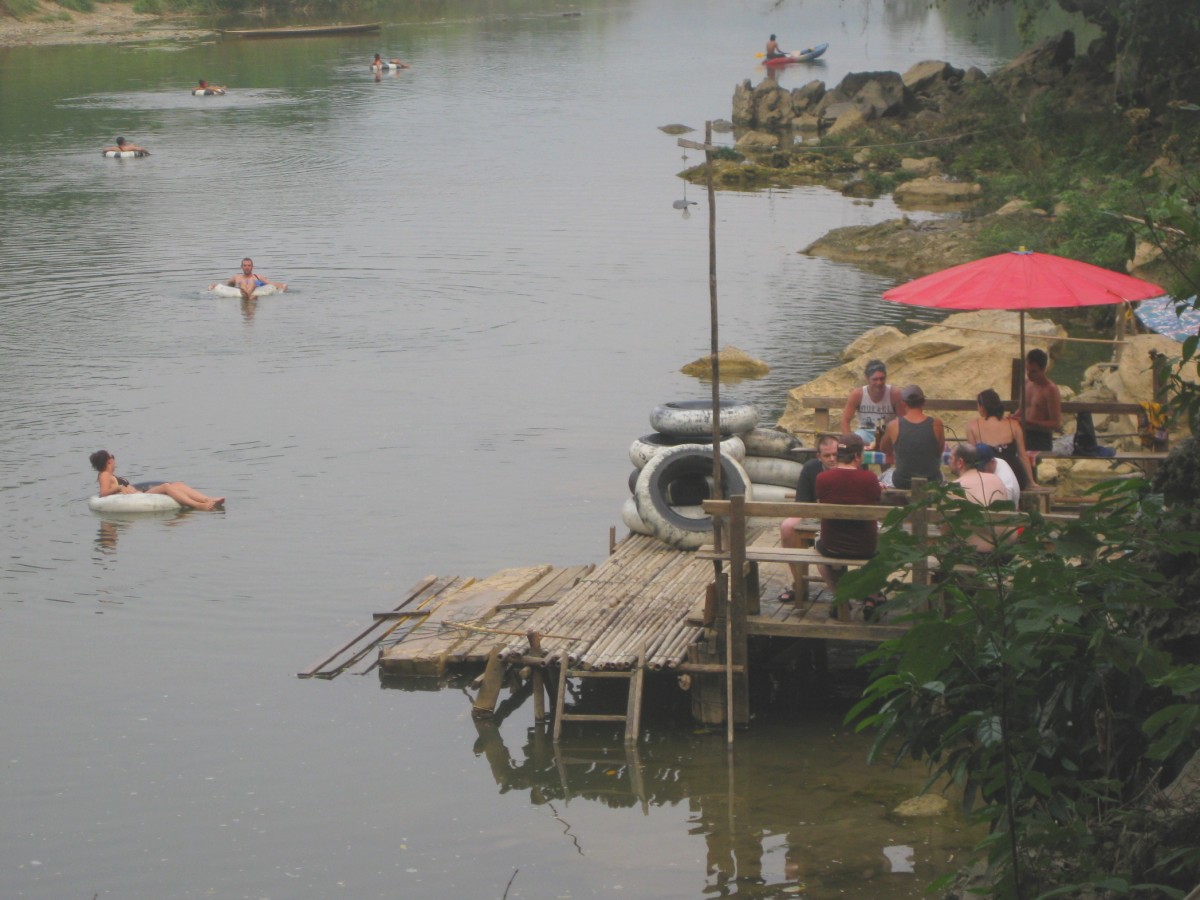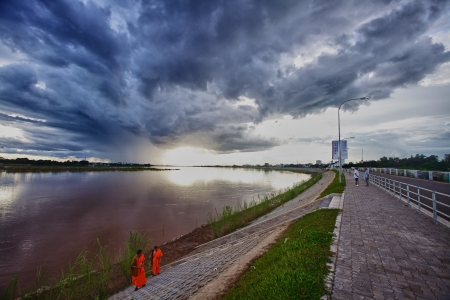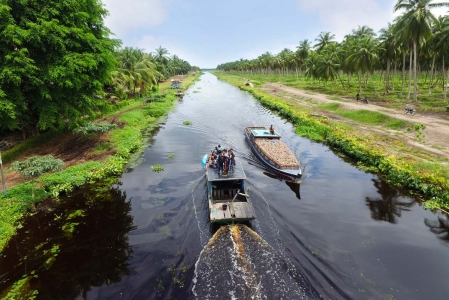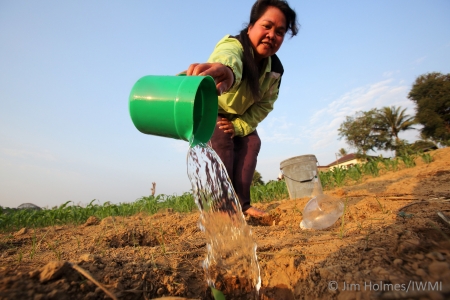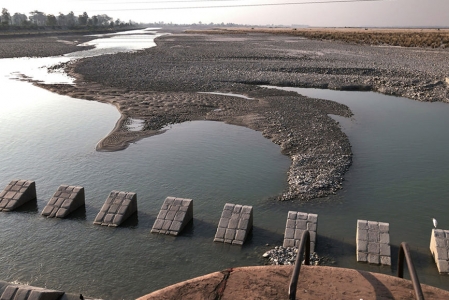The Nam Xong flows through the northern part of central Laos, offering one the main attractions in the popular tourist town of Vang Vieng in Vientiane province. The Nam Xong also underpins the livelihoods of many of the area’s residents.
While tourism plays a growing role in the local economy and offers vital income-generating opportunities to many people, the Xong river also supports traditional subsistence farmers along most of its length. However, it is increasingly being viewed as a potential resource for miners, hydropower operators and agricultural plantation owners.
A two-year WLE project has been working with local people and decision-makers from district, provincial, and national agencies to provide a scientific resource base on how potential development paths could affect the river and the people who depend upon it, thereby creating a tool that can inform policies affecting the future.
Some of the initial results of the project, presented on November 10 at the Greater Mekong Forum, have surprised local people and civil servants and are stimulating discussions on how to achieve a positive development path in the river basin.
According to Chanthasone Phetvixay of the National Economic Research Institute, one of the project partners, a survey of Nam Xong residents reveals that cash income is not considered a major factor in their overall wellbeing. Most people feel that provision of infrastructure—roads, electricity, water, education and health services—and guaranteed food security are far more important.
This becomes more important when the project’s economic modelling shows that some of the potential investments in the area, such as mines, will not directly contribute to such services and will raise income only fractionally. Moreover, such investments are likely to decrease food security and overall income if they are located on agricultural or common forestland. In some scenarios, investments are likely to increase poverty in an area as they persuade higher income residents to out-migrate, thus significantly reducing the average income. It is not clear if and how mining or agricultural investments will contribute to the infrastructure needs articulated by Nam Xong respondents.
At the same time, the modelling shows that continued growth in tourism along present lines will lead to increased pollution that could eventually destroy the area’s natural attractions.
One of the problems with cross-sectoral planning is that the representatives of each sector tend to lobby for the scenario that best suits the interests of that sector—a natural result of representing a particular group. Conflict then arises at the negotiating stage as the interests of different sectors clash.
To navigate this difficulty, the project asked participants to imagine how a local child’s life was likely to develop over the next fifteen years. Through a discussion process, a shared vision of the future is then developed through the narrative of this fictional life story. Different development scenarios are then run through the project’s economic model and the effect on the narrative is discussed.
The process is revealing. To chart its effect on individual participants, the project records belief statements made at various stages of the two-year journey through its progression. People often come to realise that some of their core beliefs are not based on evidence. This realization helps them to subsequently analyze different scenarios with more clarity.
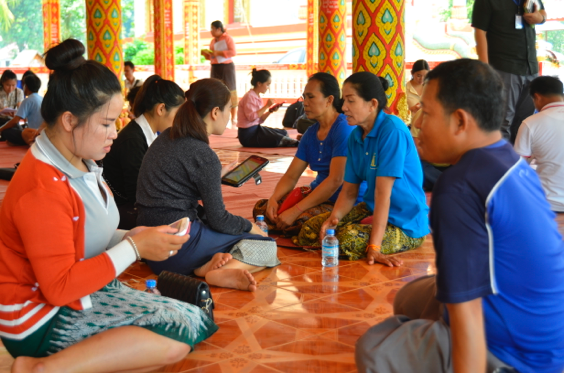
This approach has been run in various river basins across Asia and will wrap up in the Nam Xong at the end of 2016. According to project coordinator Alex Smajgl of the Mekong Region Futures Institute (MERFI), the real results come through policy actions that follow the end of the talking and can only be judged several years afterwards.
However, the retention rate among the participants has been high with most of the decision makers involved at the beginning sticking with the process for the whole two years. The project has also witnessed honest acceptance of the modeling results.
“We never tell people what to do with the evidence and findings we show them,” says Alex. “They are the decision-makers and the residents of the area. It is their choice. We aim only to provide them with bias-free information on the likely results of different paths.”
It has been shown in various contexts that while traditional scientific values often have a limited effect on government policies, shared human values can be uniting and decisive. In the different areas where it has been used, one of the common results of this modeling approach is striking: while policy-makers and normal householders usually start the process with quite different values, by the end of the project it is seen that their beliefs begin to converge.
If such a pattern can be sustained after the workshops are all over, this can only be a good thing.



